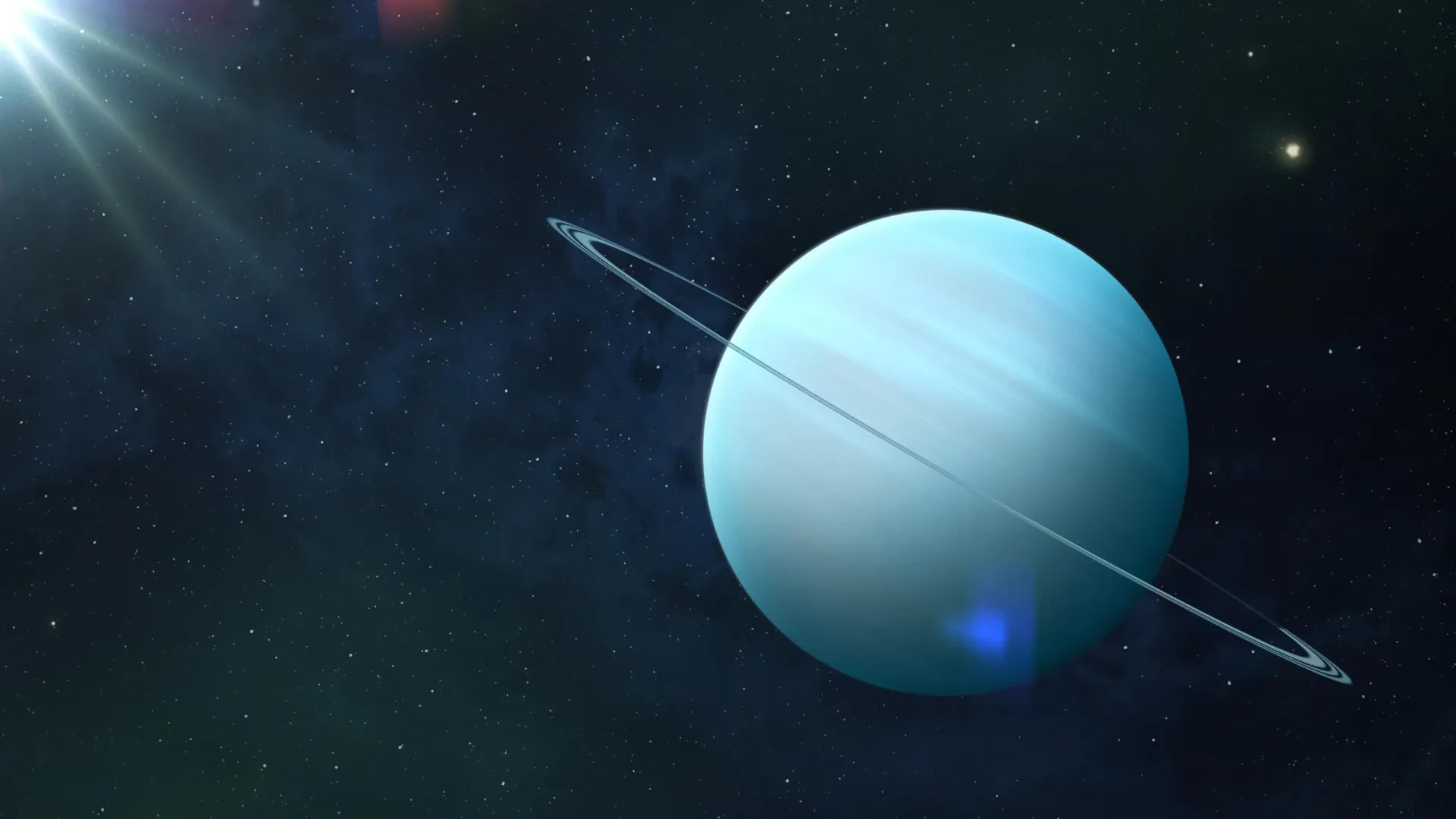Decades of mystery surrounding Uranus are over. New research confirms the ice giant does emit more heat than it receives from the Sun, resolving a puzzle that began with Voyager 2's 1986 flyby.

September 30, 2025

Source:
ScienceDaily
Decades-Old Mystery Solved
Scientists have confirmed that Uranus emits more energy than it absorbs from the Sun, solving a nearly 40-year-old mystery. The discovery indicates the planet retains internal heat from its formation, challenging previous beliefs that it was a cold, inert giant.
The groundbreaking findings were published on July 14, 2025, in the peer-reviewed journal Geophysical Research Letters. This research resolves a long-standing puzzle that originated with NASA’s Voyager 2 flyby in 1986, which failed to detect a significant thermal signature.
Rethinking a Giant Planet
Using advanced computer modeling and analyzing decades of spacecraft data, researchers found that Uranus radiates about 12.5% more heat than it receives. While this is less than other gas giants, it confirms the planet is not thermally dead.
Internal Heat: The energy is believed to be "ancient" heat left over from the planet's formation.
Slow Cooling: Uranus is still cooling down, a process common to giant planets but far less pronounced than in its neighbors.
Voyager 2's Data: The original mission may have been hampered by solar activity, which could have masked Uranus's subtle heat signature.
This evidence provides vital new insights into the planet’s formation and interior structure, fundamentally changing our understanding of this distant ice giant.
Keep up with the story. Subscribe to the PR+ free daily newsletter

Source:
Implications for Planetary Science
The discovery has significant consequences for both solar system exploration and the study of distant exoplanets. Understanding Uranus's energy balance provides a critical reference point for similar-sized planets across the galaxy.
This new knowledge is particularly timely, as the National Academies of Sciences, Engineering, and Medicine has ranked a flagship mission to Uranus as a top priority for the upcoming decade.
A New Era of Exploration
Knowing Uranus has an internal heat source will be crucial for designing the mission's scientific instruments and objectives.
"This discovery brings Uranus’s behavior more in line with theoretical expectations for giant planets," commented Dr. Michael Roman, an assistant professor of physics and astronomy not directly involved in the study. He added that it enhances the "comparative study of planetary systems."
Uranus and Exoplanets
The findings also have a direct impact on exoplanet science. Ice giants are among the most common types of planets found beyond our solar system. The modeling techniques used to study Uranus can now be applied to better understand the thermal evolution of these distant worlds.
An independent study led by Professor Patrick Irwin at the University of Oxford reached similar conclusions, adding significant weight to the findings.
Read More

Source:
Share this news:



















